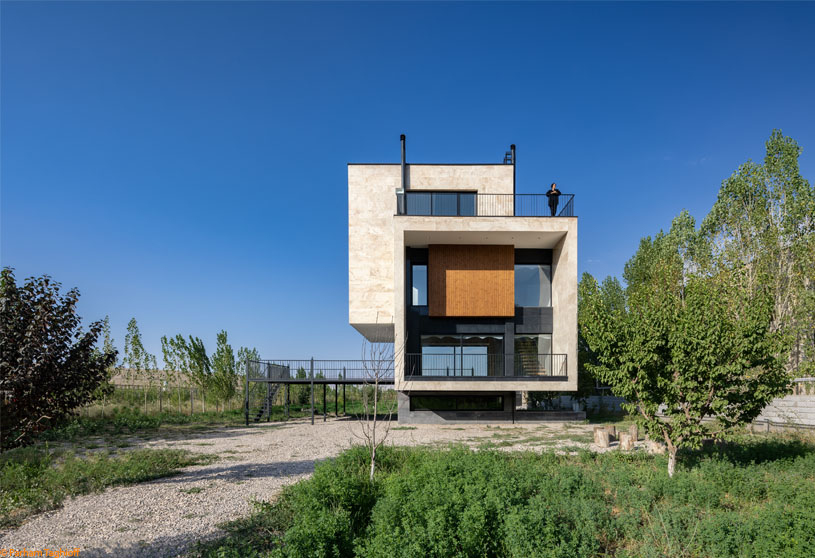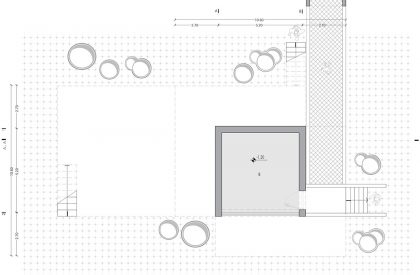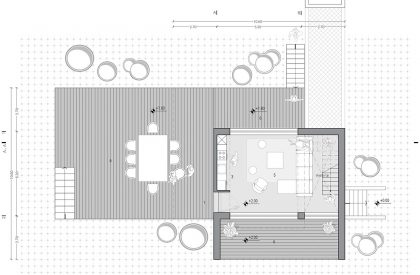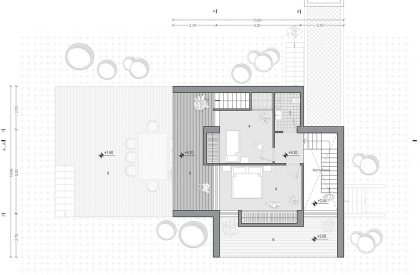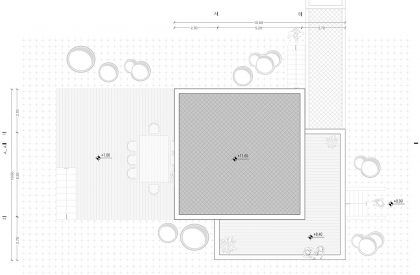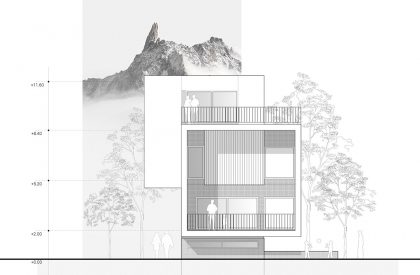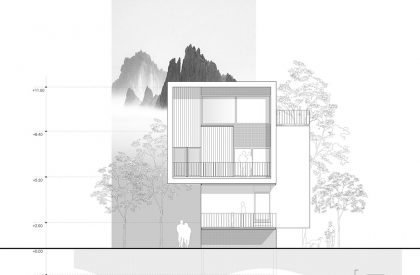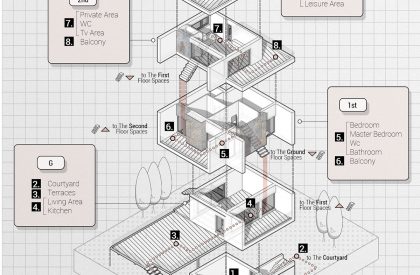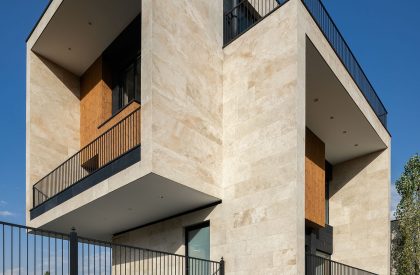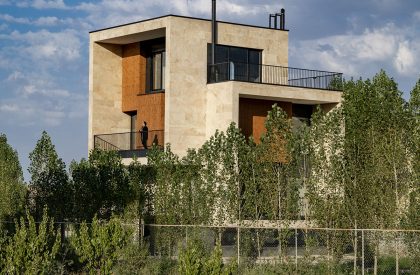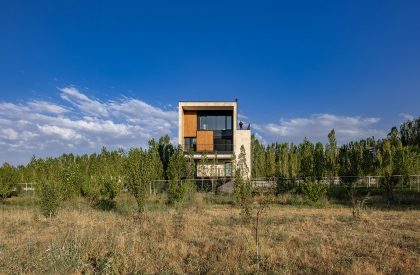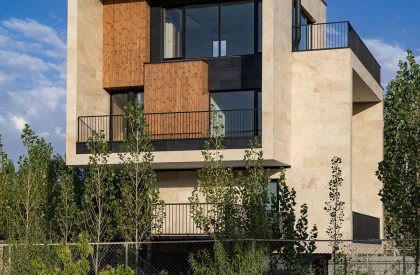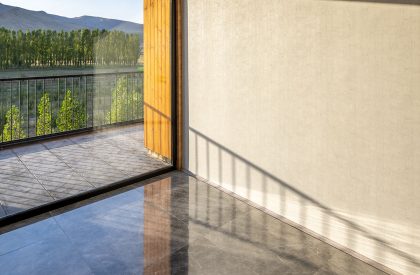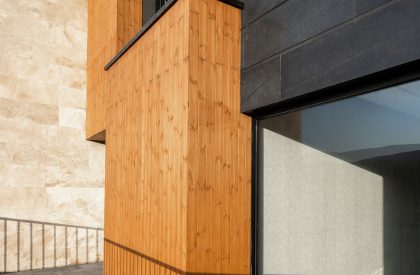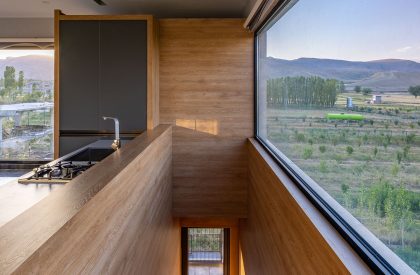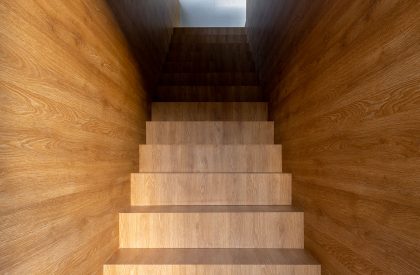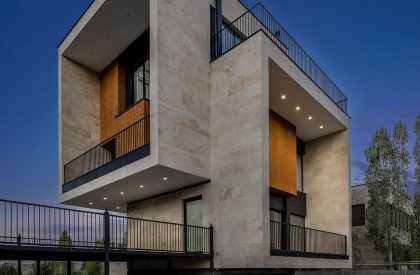Excerpt: 5*5*5 Garden House by White Cube Atelier illustrates a simple architectural language with two cubes rotated and shifted in multiple directions. This simple and clear form was conceived due the to necessity of factors such as penetration of nature into the living space, close relationships and inside-outside interaction, and creating a sense of introversion and extroversion simultaneously.
Project Description

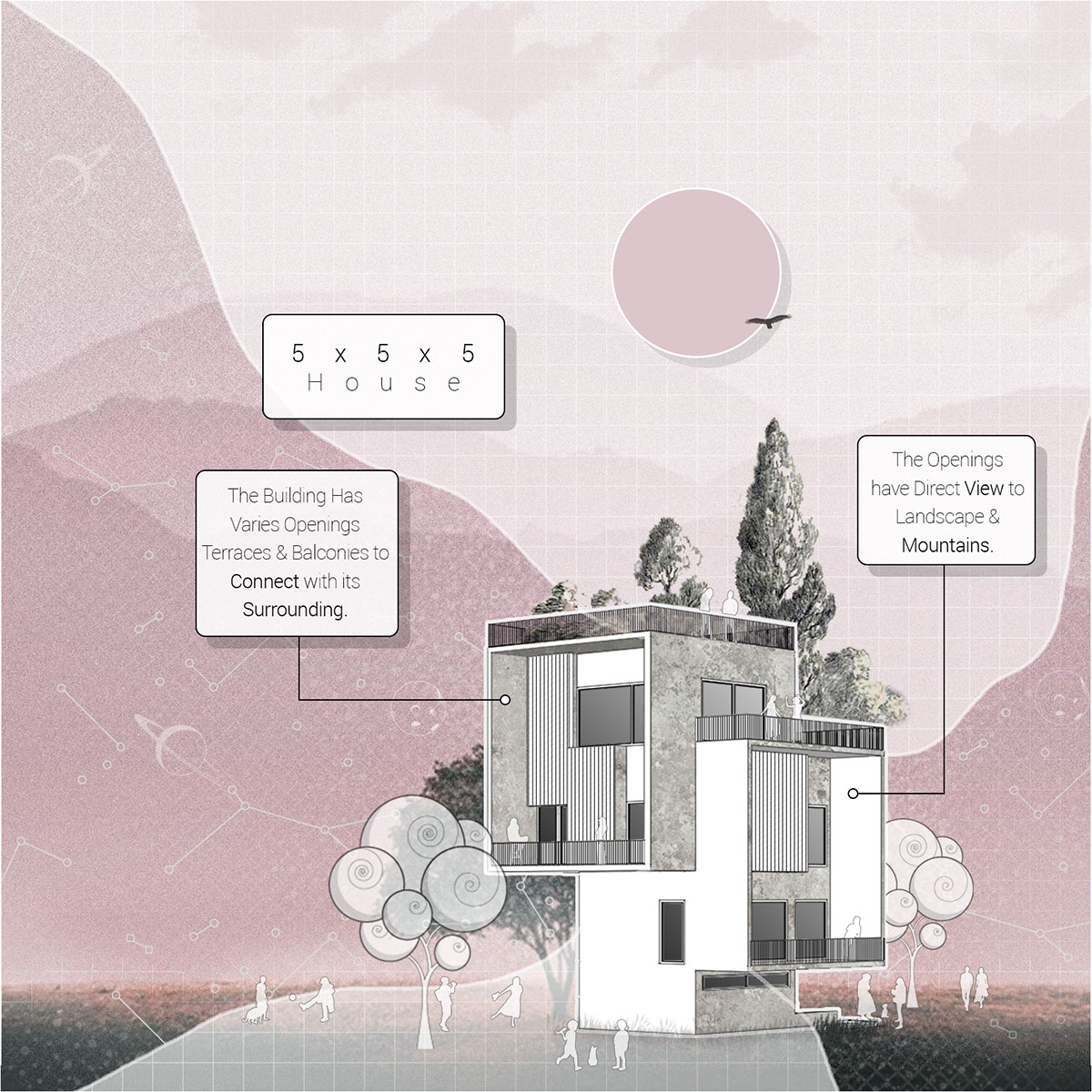
[Text as submitted by architect] 5*5*5 Garden House was designed and built in the Gajut tourist area, located in Mako. The main challenge of the project was the limited gross area of 25 square metres due to its location in the garden and agricultural land.
The penetration of nature into the living space, close relationships and inside-outside interaction, and creating a sense of introversion and extroversion simultaneously were the topics the designers were looking for. These issues led to the simplest, clearest, and most regular approach to design.’
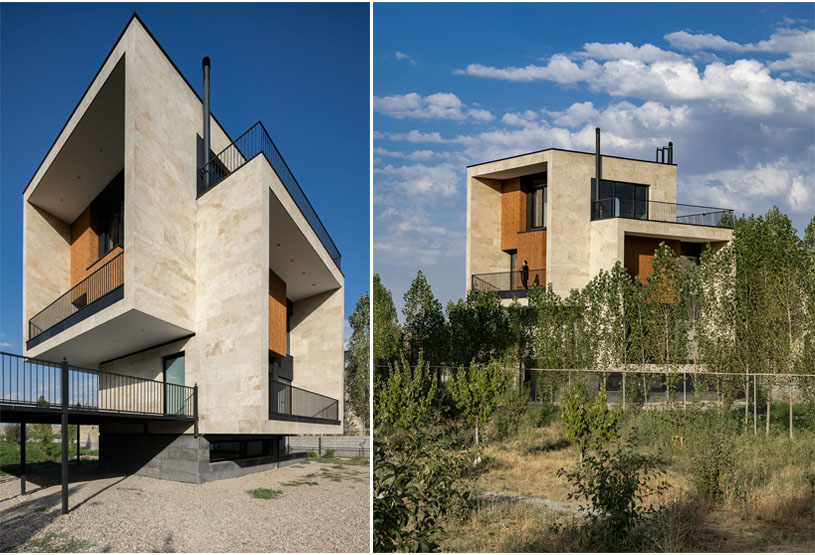
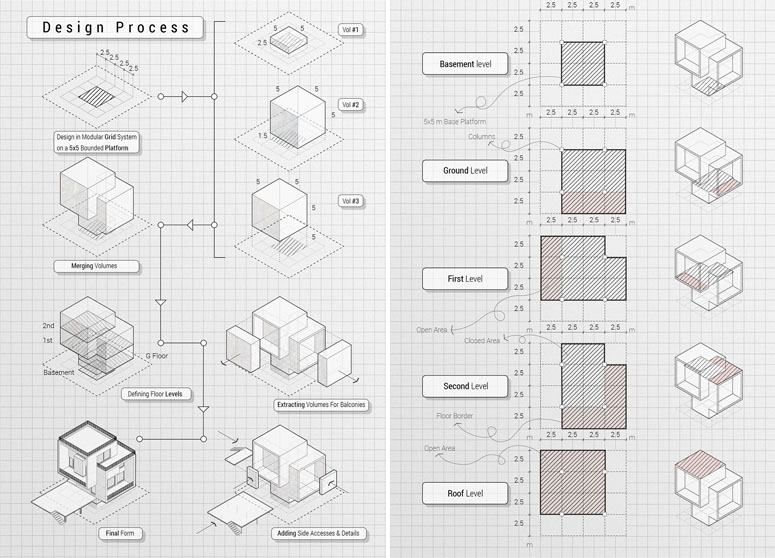
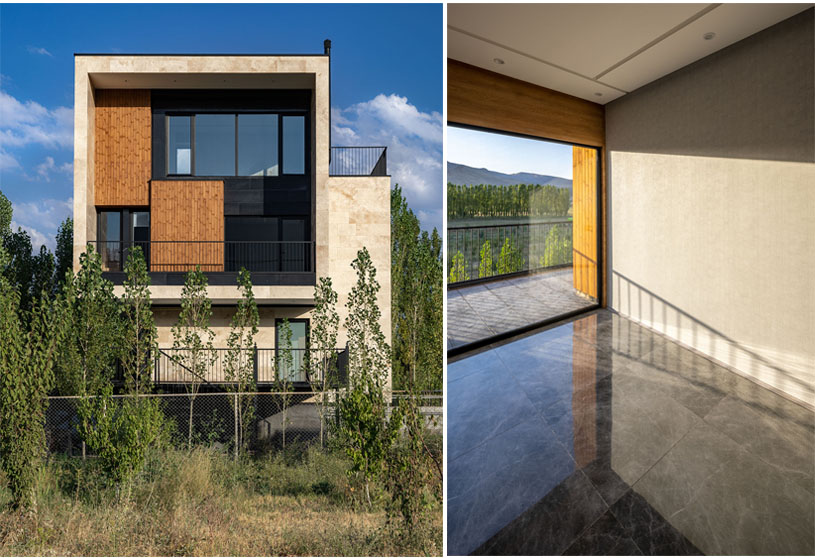
The story of the project started with one cube, which multiplied into two cubes and rotated 90 degrees relative to each other and shifted in different directions and axes, surrounded by a larger cubic network. These cubes and their movements relative to each other are done in a modular and regular grid on the X-Y-Z axis. The third volume is sunken into the ground as a base and covered with the dark material of basalt stone, differentiated from the suspended white volumes.
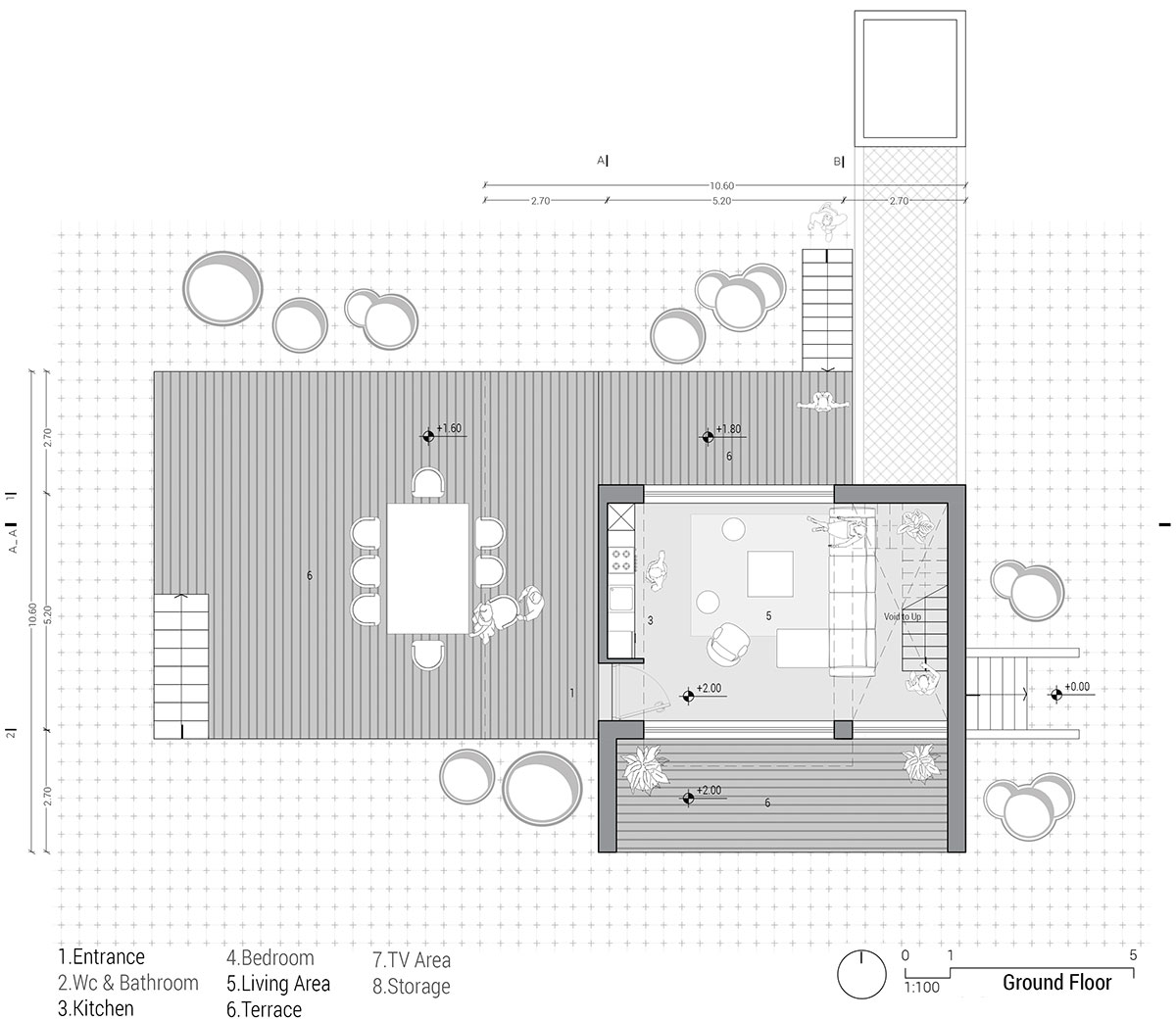
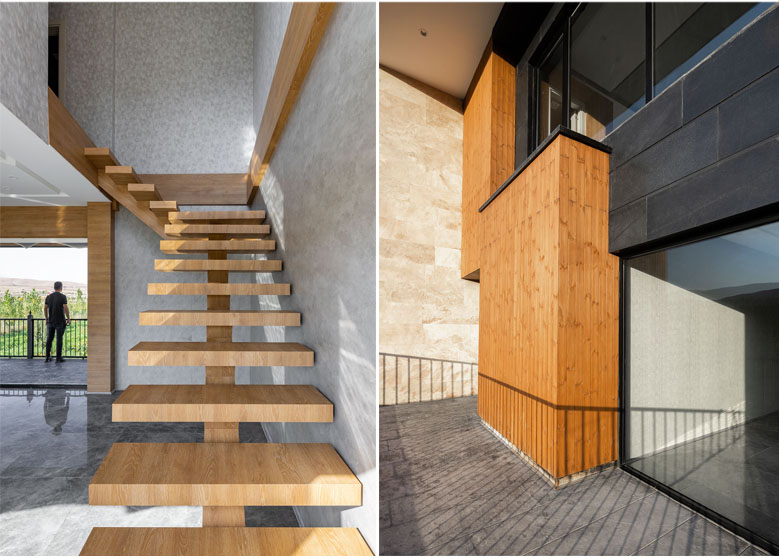
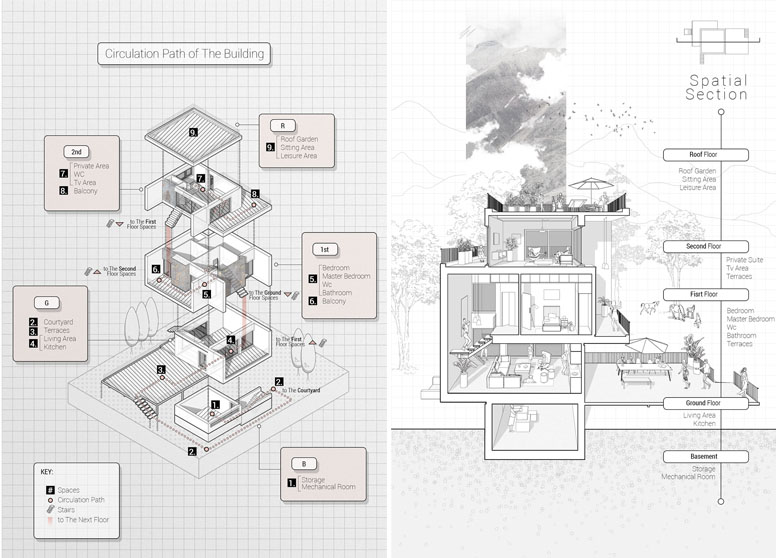
Empathy arose from the junction of two cubes that embraced each other and formed an enclosed space for the private zone. This involvement has resulted in four levels: The 1st level is the basement and storage; the 2nd level is dedicated to the living room and kitchen; the 3rd level includes bedrooms and a bathroom; and the 4th level is allocated to a separate suite for guests. There are terraces on each level to observe the twin mountains of Ararat and the surrounding plains and gardens.
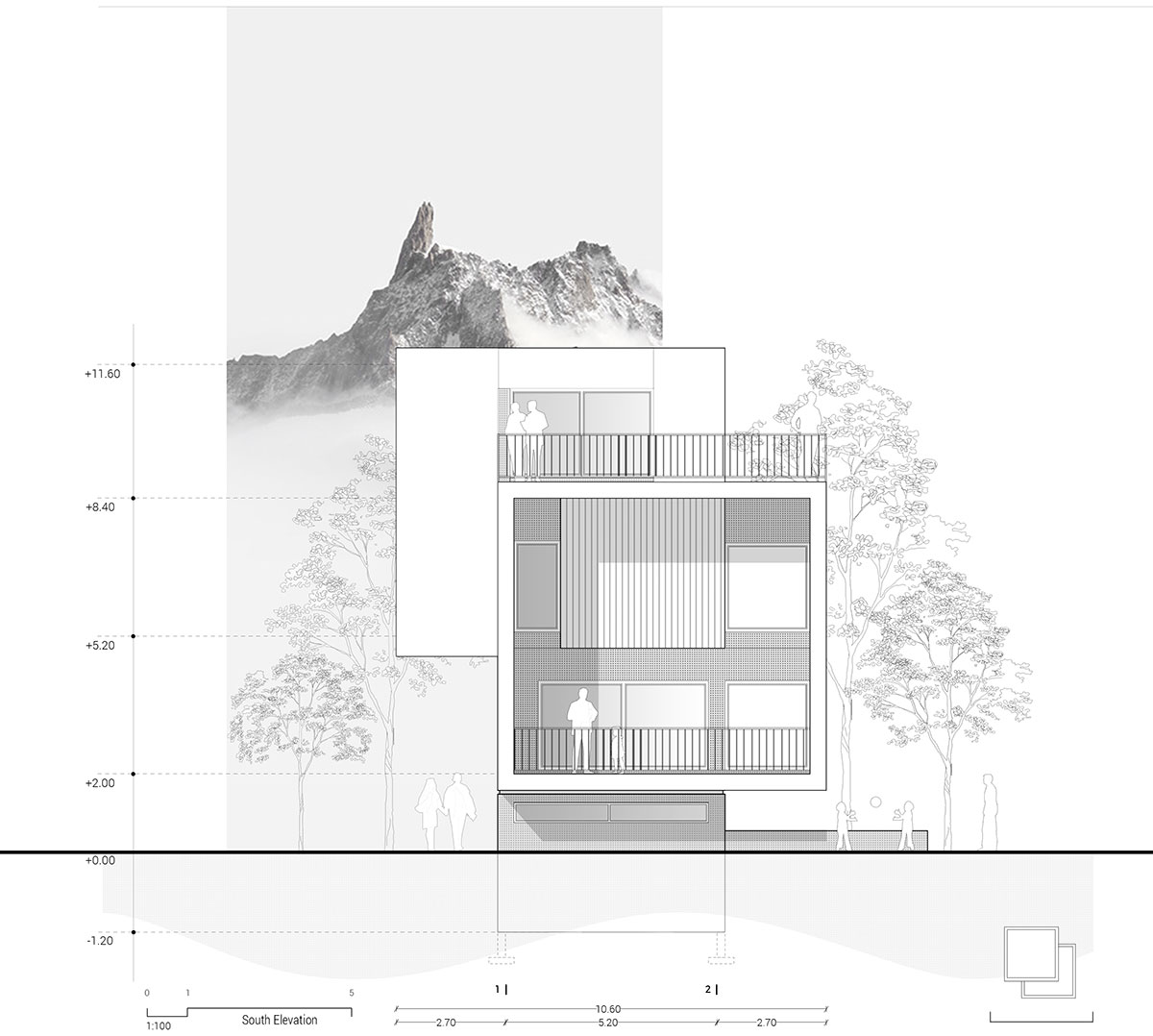
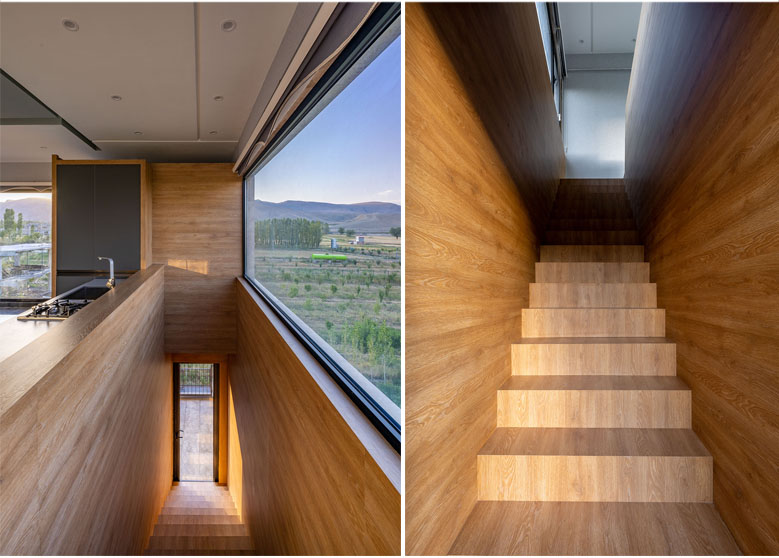

From the social and cultural point of view and by reviewing the experiences of the past years, the designers find out that the design and construction of garden houses is not based on the shelter need. Often, the search for qualities lost in the hustle and bustle of urban life and sometimes the need to have a piece of nature as a covered space are the determining factors in the formation of garden houses.
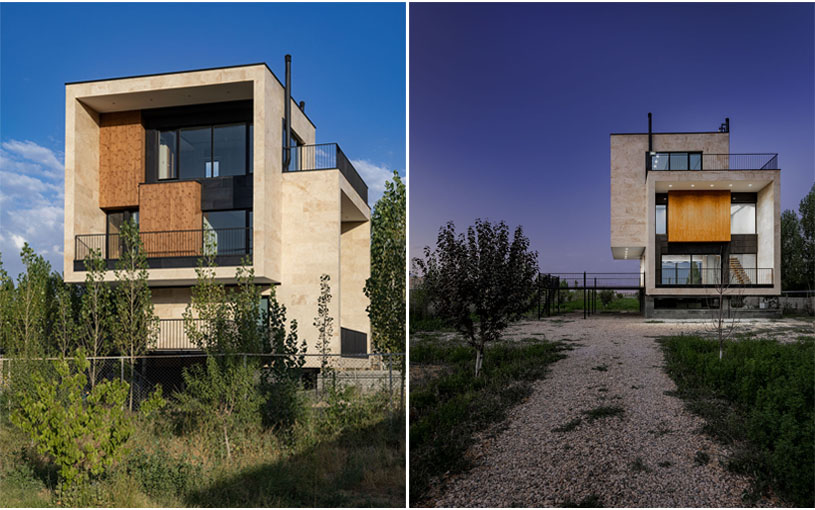
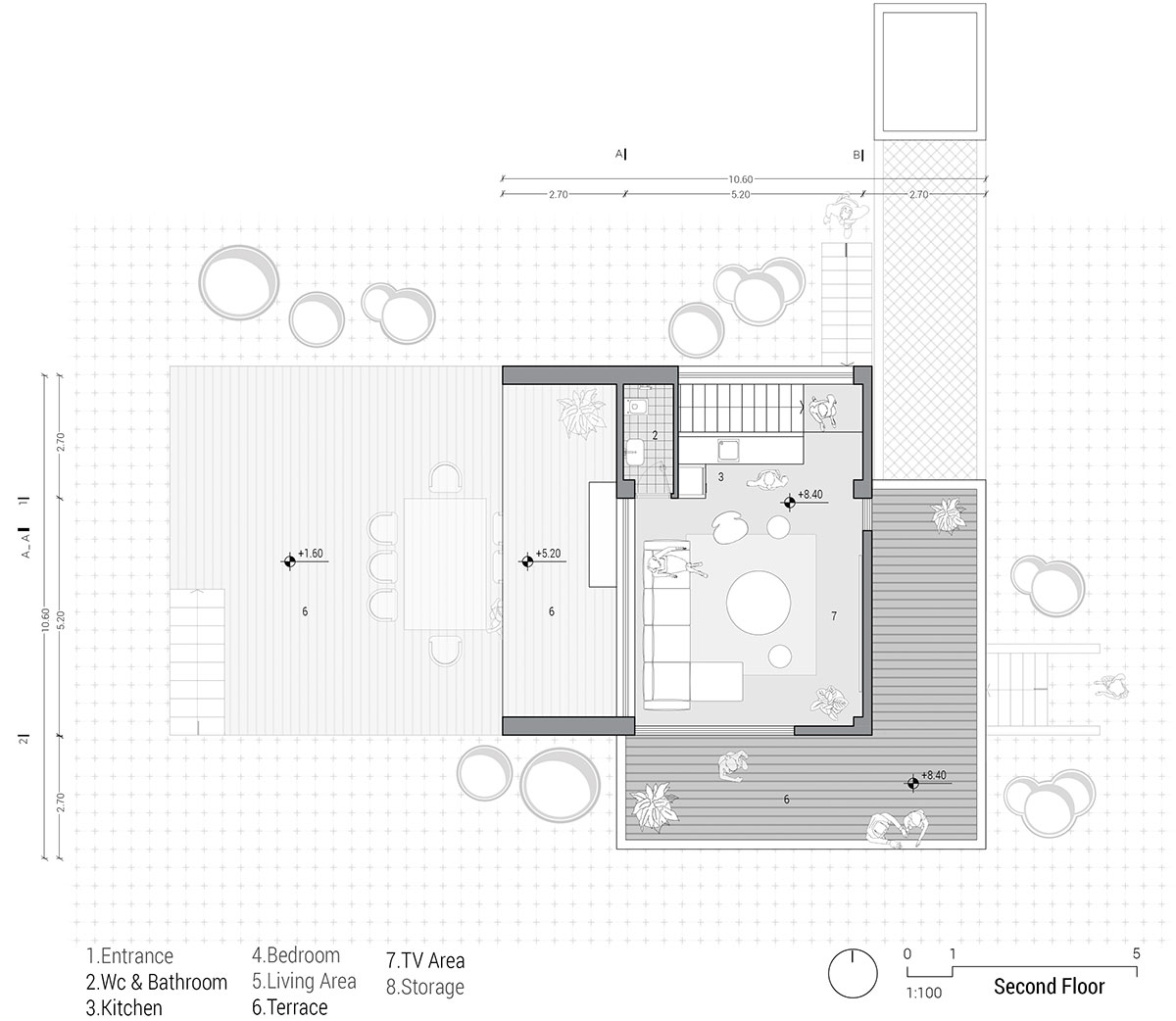
As one believes that today’s life needs simplicity more than anything, these concepts lead to a minimal and orderly presence in nature. In fact, it is an attempt to remind the client to experience a more thoughtful presence.

May the continuity of this concern and the use of simple language in architecture, as one of the principles of modern architecture, be able to improve the chaotic built environment.
